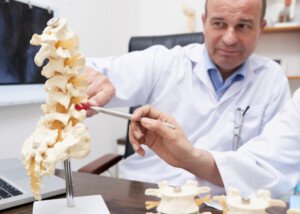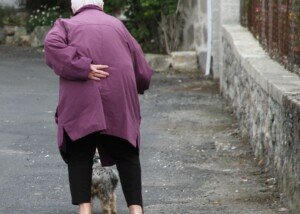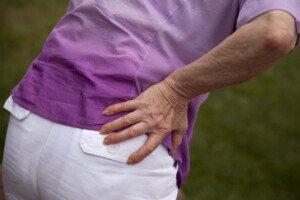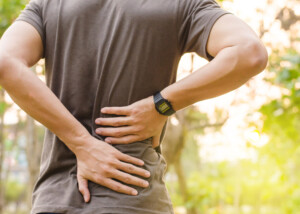Can Lifting Weights Cause a Winged Scapula?

Lifting weights can cause a number of injuries involving the shoulder and back, and many weightlifters wonder if a winged scapula can be one such injury. (more…)
Can a Winged Scapula Have No Pain Symptoms?

You can have a “winged scapula” and not even know it.
When’s the last time you looked at your upper back in a mirror? A winged scapula can progress and require treatment. (more…)
How to Prepare the DigniCap® Chemo Hair Loss Prevention

Here are the instructions simplified on how to prepare the DigniCap® for the prevention of hair loss during chemotherapy.
Wetting the Hair
• Make sure hair is washed first at home before attending the treatment.
• Thoroughly wet hair; very important.
• Comb wet hair flat.
Cap Size and Fitting
• The silicone cap must be fitted very closely to patient’s scalp, covering all the (wet) hair.
• Do not let air get trapped between the cap and the scalp, as this will interfere with the cooling.
• There are different size caps available: XS, S, M and L.
• Minimize breaks during infusion.
Application of Cooling Cap
• The silicone cap goes on, followed by the neoprene outer cap.
Connect Cap to Cooling Unit
Begin the Scalp Cooling Treatment
• Hospital staff operates the cooling and control unit, not the patient.
• The target temperature is 37-41° F (3-5° C).
Completion
Let hair dry naturally.
In addition to these preparation instructions for the DigniCap® chemo hair loss prevention system, it’s important how you care for your hair between infusions.
• Avoid daily shampooing.
• When you do shampoo, use lukewarm water and gentle shampoo.
• Avoid heat applications—all of them.
• Avoid peroxides, perms, parabens, sodium laurel sulfate, silicones or “anti-frizz” ingredients.
• Don’t brush or comb more than twice a day, ideally once. Use a wide tooth comb.
• Avoid rubberbands and headbands.
 Lorra Garrick has been covering medical, fitness and cybersecurity topics for many years, having written thousands of articles for print magazines and websites, including as a ghostwriter. She’s also a former ACE-certified personal trainer.
Lorra Garrick has been covering medical, fitness and cybersecurity topics for many years, having written thousands of articles for print magazines and websites, including as a ghostwriter. She’s also a former ACE-certified personal trainer.
.
Source: dignicap.com/patients/
How to Prevent Hair Loss from Chemotherapy: the DigniCap

The DigniCap hair preservation method is capable of preventing just about all hair loss from chemotherapy.
In some patients. You don’t know if you’ll be one of the lucky ones. (more…)
Why Do Onions Make You So Hungry?

Have you noticed that soon after eating anything with onions, you’re so hungry you can eat a horse?
And this hunger from onions is relentless, because you keep eating afterwards and the hunger is still deep. (more…)
Can Popping Balloons at a Child’s Birthday Party Harm Hearing?

You may want to skip all the colorful balloon popping at your child’s next birthday party, as this can damage the hearing of little ears.
Certainly, good food and fun games are all that the partygoers need to have a great time. (more…)
How to Get a Dog to Do HIIT While YOU Take It Easy!

You don’t have to do HIIT just because you’re “making” your dog do it!
There’s a way to take it quite easy while you get your dog to do high intensity interval training. (more…)
Why Do Some People Always Smile when Talking Even if It’s Bad?

Do you know someone who, no matter what the topic of conversation, can’t quit smiling when talking?
This doesn’t refer to the smiling between two good friends who haven’t seen each other for awhile or someone telling a funny story.
This article refers to two kinds of “smile while talking” people:
#1 Someone who has a continuous smile on their face while talking to you, and this person may be someone you hardly see or frequently see, and you’ve noticed they’re like this with anyone they talk to.
So it has nothing to do with how likeable you are.
#2 Then there’s the news anchorman or anchorwoman, or some guest on a CNN or Fox News segment about the latest story.
Or, the “smile while talking” person may be an attorney, juror, reporter or someone somehow connected to a murder case and is giving some information.
But what’s there to smile about?
The striking thing is that the topic of what they’re speaking about is neither funny, amusing nor delightful.
Ever see a TV show called “Snapped” on the Oxygen network? These are documentaries of women who’ve committed murder.
Each episode features key people such as a detective, a juror, the killer’s mother, a friend of the deceased, etc.
Every so often, one of them has a continuous smile on their face as they’re talking about a MURDER.

One man, in law enforcement, was describing details about a decapitation — and all the while, had a smirk on his face!
There are guests on CNN or an ID Channel show who, while talking about some disastrous incident, such as a plane crash, mass shooting or serial rapes, is wearing an ongoing grin while explaining things and answering questions.
What is UP with this?
Look at the smiling woman below, taken from a crime docudrama called “Fear Thy Roommate.” What do you think she’s talking about?

The picture was taken as this woman, Tiffany, was describing how her mother Darlene’s roommate Angela would remove the shared home’s lightbulbs — to make the place dark — and hide her glasses.
Tiffany states that this “made my mother stumble around in the house and hurt herself.” Why is she grinning as she says this?
Eventually, Angela assaulted Darlene; Darlene called the police. Angela convinced the cops that she was the victim.
Darlene was taken away by the police. Below is how Tiffany looked as she said, “She got three days in jail.”

It gets worse. Tiffany is then talking about the time that Angela struck Darlene in the head with a hammer and then threatened her with a knife. Below is the image right as she’s describing this.

This is absolutely appalling. Not long after the incident, her terrified mother stabbed Angela to death after Angela began attacking her.
This is serious stuff, yet Tiffany is grinning all throughout.
And then there are the reporters who have a constant smile while talking about less tragic events.
But at the same time, these events are not the least bit funny, amusing or delightful, such as a traffic jam or local flooding.
Why do these people smirk?
One time on CNN was a guest who was commenting on Donald Trump’s presidential campaign.
The entire time she was talking, she was smiling — from ear to ear. It really looked ridiculous.
She had a very pretty face. Perhaps while growing up, she was always being told to smile — because of her attractive features, a la “You should smile more often; you have such a pretty face!”
Hearing this instruction often enough, she developed the habit of breaking into a fixed, ear-to-ear smile whenever she was talking about ANYTHING.
It just looked so scripted. And yes, it was ear to ear and very inappropriate for the topic of talk.
I’ve seen many reporters on TV wearing an ongoing smile (which is often more like a grin or smirk) while relaying a story about something that is nothing to smile about, such as a forest fire, tornado, street crimes, a segment on identity theft, etc.
Check out the image below of CNN anchor Abby Phillip.
The three other people have a serious, concerned facial expression, while Abby maintains a goofball smirk.
It wasn’t momentary; it was ongoing throughout the discussion; very inappropriate.

Woman Smiles Through Discussion of Sexual Misconduct Allegation
Below is an image of a panel discussion on Democrats staying silent about sexual misconduct allegations against Governor Mario Cuomo by a former aide.

Why is the woman on the bottom left smiling? Look at the other panelists. This was not a fluke second of time. This woman was grinning the entire time.
It’s easy to believe that someone in these individuals’ past kept harping on them to “wear a smile all the time.”
Perhaps as children they got punished for not smiling on command.
And it isn’t just women who do this. I’ve seen plenty of men with a continuous smile plastered on their face while part of a serious discussion or debate.
Smiling while talking of a heartwarming story is one thing, such as a child whose lemonade stand near a construction site made a killing.
But as mentioned, this refers to people who can’t stop smiling while talking about murders, violent crimes, racism, ISIS, the latest controversial subjects, bad weather, political scandals – you name it.

Some people wear a perpetual smile just like this, even when they’re on court TV and listening to the judge describe their case — even if it’s a very distressing case. WTF! Shutterstock/Tanit
I have an adult nephew who did this last time I saw him — but the conversation wasn’t about anything amusing; rather, just run-of-the-mill catch-up stuff, as I hadn’t seen him for a few years.
The nonstop grinning was annoying, I’m sorry to say. He was doing this with everybody, so it wasn’t an issue of him being ecstatic to chat with me (I’m not THAT special!).
The Problem with Smile Talkers
This habit can put listeners, in a face-to-face situation, ill at ease.
If a person is shy, introverted or otherwise socially awkward, they may feel pressured to smile back or maintain a perpetual smile themselves while the talking person keeps smiling away.
This is very unnatural and awkward to such a listener who’s already self-conscious enough as it is in social situations.
If this describes you, you’ll feel liberated if you wear your natural face.
Do not let someone else’s relentless habit dictate how to move the muscles of your face.
If something’s funny, then by golly, crack a smile. If nothing is funny, do not feel pressured to be untrue to yourself.
 Lorra Garrick has been covering medical, fitness and cybersecurity topics for many years, having written thousands of articles for print magazines and websites, including as a ghostwriter. She’s also a former ACE-certified personal trainer.
Lorra Garrick has been covering medical, fitness and cybersecurity topics for many years, having written thousands of articles for print magazines and websites, including as a ghostwriter. She’s also a former ACE-certified personal trainer.
.
Top image: Shutterstock/UfaBizPhoto
Spinal Stenosis: Should Trying to Stand Straight Be Avoided?
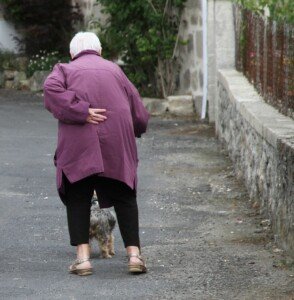
As spinal stenosis progresses, the patient gets increasingly hunched over when walking.
“Spinal stenosis is a common problem that develops in the spine as we age,” says Dr. Nick Jain, MD, a board certified and fellowship trained orthopedic spine surgeon at DISC Sports & Spine Center in Newport Beach, CA.
“Oftentimes, we notice, as people with spinal stenosis start to hunch forward or their neck begins to tip forward.
“This typically occurs in the neck and low back as flexion (leaning forward) actually relieves spinal stenosis and provides more room for the spinal canal, and the body and nerves tend to prefer being in these positions when stenosis exists.”
Wouldn’t repeatedly standing straight help reverse this situation or at least make erect posture more tolerable?
“Stand up straight!” my mother has often told my father, who has spinal stenosis.
It’s not uncommon to see senior age people walking with the distinct hunching over of spinal stenosis (narrowing of the spinal canal through which the spinal cord fits).
Hunching over is called lumbar flexion and relieves the pain, which is why patients do this.
There is actually nothing mechanical blocking their ability to straighten out more.
However, this doesn’t mean in severe cases that they can straighten out all the way and stand perfectly vertical.
In my father’s case he can straighten to nearly vertical but claims that this position is intolerable. But when he lies on his back in bed, his back is perfectly straight.
“Extension (leaning back) and trying to stand very erect with good posture can actually compress the nerves and be more painful for people with spinal stenosis,” continues Dr. Jain.
Walking straight for some patients is so painful that they maintain a marked slump while walking even short distances.
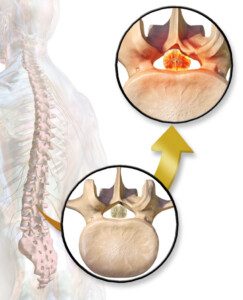
Spinal stenosis. Blausen.com staff/Bruce Blausen CC BY 3.0 creativecommons.org/licenses/by/3.0/Wikimedia Commons
From an intuitive standpoint, it seems as though an effective exercise would be to stand in one spot and very briefly straighten (extend), to retrain the back for good posture and strengthen the lumbar area.
It seems logical that over time, the duration of extension would increase due to a higher tolerance of this position that would come with time.
But what seems logical or intuitive isn’t always the reality.
“So, in short, for some people with spinal stenosis, trying to stand up straight probably should be avoided if it leads to increased pain,” says Dr. Jain.
“Forcing an erect posture can be dangerous for someone with spinal stenosis in the neck or low back, as it can actually kink the spinal cord or the nerves passing through the spinal canal — and should generally be avoided, as it would be unlikely to remodel the spine.”
“However, some people are hunched forward due to a spinal deformity that may be fixed or mobile.
“For people with these issues, core strengthening exercises and trying to maintain an erect posture may help eliminate pain and symptoms, as the body has a natural ‘cone of efficiency,’ and leaning or falling forward (i.e., bad posture) requires a lot of energy expenditure by the body and often induces pain.
“But people with spinal deformities without stenosis may benefit from exercises to improve their posture.”
Is it spinal stenosis or a spinal deformity?
Dr. Jain explains, “An evaluation by a professional can help distinguish between these two situations, as sometimes a small, minimally invasive treatment for spinal stenosis (such as an epidural injection or decompression surgery) can allow someone to stand up straighter and taller by alleviating the stenosis.
“However, people with spinal deformities often need surgical treatment to realign the spine and secure it in the proper place and alignment.
“Consult with an expert for your specific situation before forcing the neck or low back into a certain position, especially if that position causes discomfort, numbness or tingling.”
To put this succinctly, you can’t work out spinal stenosis.

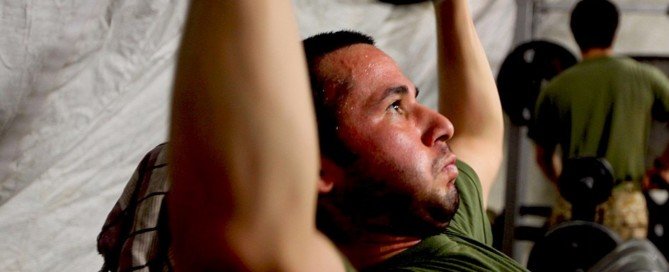
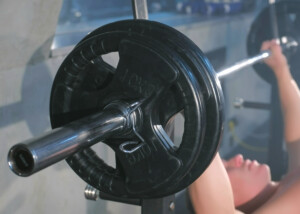



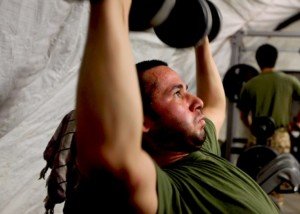


















 Dr. Jain
Dr. Jain 